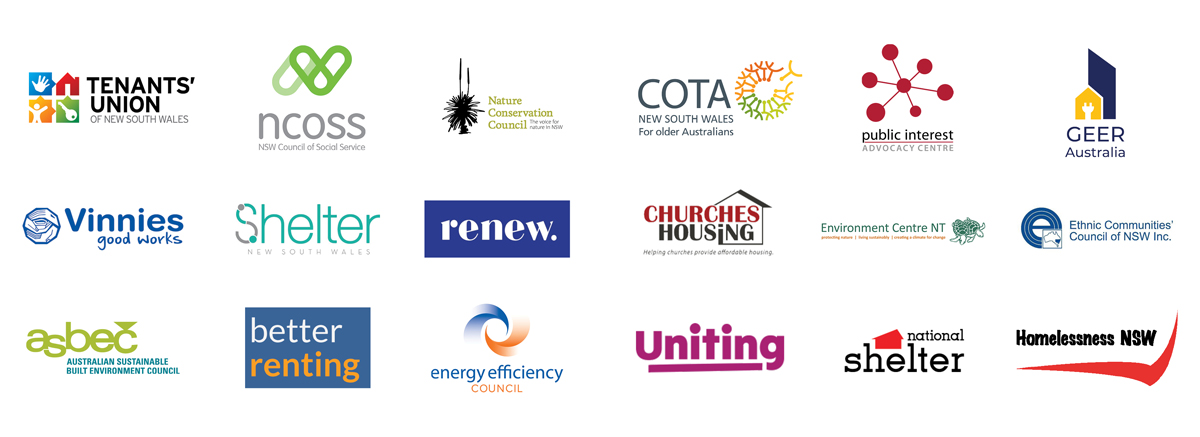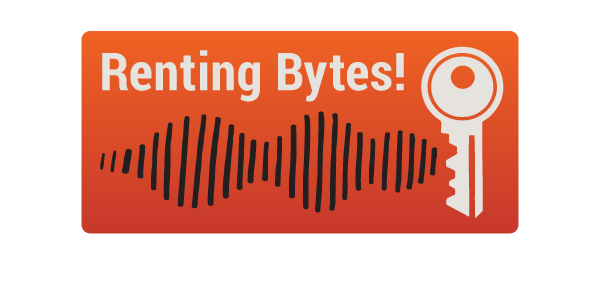Ensure all rental homes are safe and healthy
11/02/2020

We, a broad collection of community, business, research and environment groups, have come together to call for the NSW Government to set strong minimum standards for rental homes. All rental homes should be safe, healthy and affordable to run.
We congratulate Minister Kean for recognising the need for meaningful and urgent action on emissions. We also recognise his considerable leadership in his former role as Minister for Innovation and Better Regulation, when he passed legislation specifying minimum standards in rented homes including ventilation and protection against dampness and water penetration. We believe NSW must build on this vital work and introduce minimum standards that protect people who rent from heat, cold, and outdoor air pollution.
While all homes in Australia should provide decent shelter, the issue is particularly pressing for rental homes. Many rental homes in NSW are little better than glorified tents – dangerously hot in summer and freezing in winter. Data from the Australian Bureau of Statistics indicate that renters are three times more likely than homeowners to live in a home without insulation.i A draughty, uninsulated home without efficient heating and cooling appliances doesn’t just make it expensive to maintain a safe indoor temperature – it can make it impossible.
The health of renters is affected by the quality of their homes, particularly with regard to indoor temperatures. Every year, cold weather kills 2,600 Australiansii – that’s more than double Australia’s annual road tolliii. Many of these deaths are avoidable: Sydney has almost double the rate of deaths linked to cold weather as Stockholm in Sweden, a place that is far colder than NSW but that has enforced much stronger standards for homes.iv Further, increasing summer heat from climate change is estimated to increase heat-related mortality by 344% by the 2080s.v
Put simply, a home that doesn’t protect people from the elements is not a safe home.
There is now widespread consensus that the only way to protect NSW’s two million renters is to set minimum standards for health, safety and efficiency, including:
- Ceiling insulation
- Draught proofing
- Efficient systems for heating and cooling; and
- Efficient hot water systems.
The benefits of bringing rental homes up to scratch will far exceed the cost. Standards would result in improvements to public health, reductions to household energy costs, mitigation of climate pollution, and the creation of local jobs. Rental standards will be particularly beneficial for low-income renters, people with disabilities, and older Australian renters.
The NSW Government has already recognised that the minimum standards that protect homes from heat and cold are both vital and affordable. The Government’s 2016 Draft Plan to Save NSW Energy and Money proposed introducing minimum energy efficiency standards for all rental homes, requiring property owners to bring properties up to standard. The Draft Plan also proposed a ratings system for the energy efficiency of rental properties. This plan was projected to save $987 million dollars of renters’ electricity bills over 30 years, easily paying for itself in economic benefits as well as contributing to reduced emissions.
Standards should be introduced through a well-designed, staged implementation process. Standards should be announced well in advance of compliance dates, allowing landlords to spread upgrades over several years, thus minimizing disruption and potential impacts on rental markets.
People who rent in NSW pay a median rent of $24,700 each yearvi – generally their single largest household expense. For this amount of money, they should be able to expect that their home is safe. If a business makes money renting out cars, they must ensure that those cars are safe. With more Australians renting, raising families as renters, and growing old in the private rental sector, landlords have a responsibility to ensure that these people who rent have safe homes.
Signed:
Julie Foreman, Executive Officer, Tenants’ Union NSW
Joanna Quilty, Chief Executive Officer, NSW Council of Social Services
Chris Gambian, Chief Executive, Nature Conservation Council of NSW
Jack De Groot, Chief Executive Officer, Vinnies NSW
Adrian Pisarski, Executive Officer, National Shelter
John Engeler, Chief Executive Officer, Shelter NSW
Meagan Lawson, Chief Executive Officer, COTA NSW
Damien Moyse, A/Chief Executive Officer, Renew
Suzanne Toumbourou, Executive Director, ASBEC
Katherine Mckernan, Chief Executive Officer, Homelessness NSW
Joel Dignam, Executive Director, Better Renting
Rob Murray-Leach, Head of Policy, Energy Efficiency Council
Dr Rowan Bedggood, Chair, Geer Australia
Jonathon Hunyor, Chief Executive Officer, Public Interest Advocacy Centre
Abby Mellick Lopes on behalf of the Cooling the Commons Research Team, University of Western Sydney
Magnus Linder, Chief Executive Officer, Churches Housing
Shar Molloy, Director, Environment Centre NT
Iain Maitland, Energy Advocate, Ethnic Communities’ Council of NSW
Doug Taylor, Deputy Executive Director, Uniting NSW & ACT
Joanna Leece, Executive Officer Kildonan & Lentara, Uniting Vic.Tas
i Australian Bureau of Statistics 2009 4602.2 - Household Water, Energy Use and Conservation, Victoria, Oct 2009
ii Gasparrini et al, 2015 “Mortality risk attributable to high and low temperature: a multicountry observational study” Lancet 2015; 386: 369–75
iii motoring.com.au. ‘Australian Road Toll up in 2019’, 7 January 2020. https://www.motoring.com.au/australian-road-toll-up-in-2019-122316/.
iv Barnett, Adrian. ‘Cold Weather Is a Bigger Killer than Extreme Heat – Here’s Why’. The Conversation, 22 May 2015. https://theconversation.com/cold-weather-is-a-bigger-killer-than- extreme-heat-heres-why-42252.
v Gosling, Simon N., Glenn R. McGregor, and Jason A. Lowe. ‘Climate Change and Heat- Related Mortality in Six Cities Part 2: Climate Model Evaluation and Projected Impacts from Changes in the Mean and Variability of Temperature with Climate Change’. International Journal of Biometeorology 53, no. 1 (January 2009): 31–51. https://doi.org/10.1007/s00484- 008-0189-9.
vi Tenant Union of NSW, Rent Tracker, available online at: https://www.tenants.org.au/tu/rent-tracker




